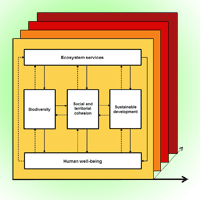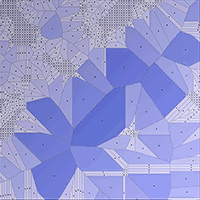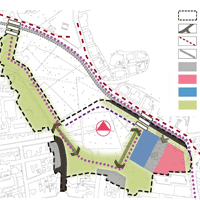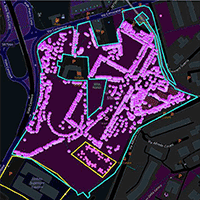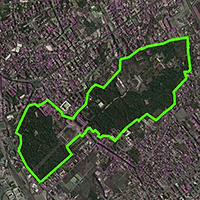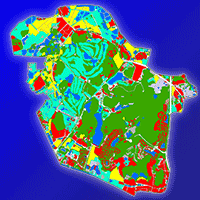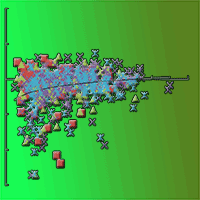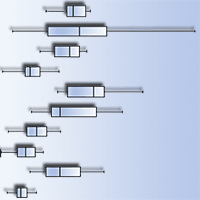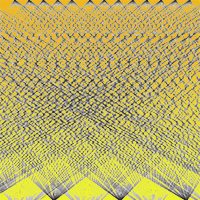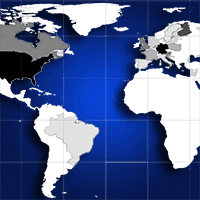The last decades have seen a major shift in the planning and development of ecosystem and landscape management in Europe. First of all, in line with international developments, the life-support services of ecosystems have come to the fore through the application of the concept of “ecosystem services”. Secondly, drawing on the principles of landscape ecology linkages between ecosystems are being stressed through the concept of “ecological networks”. Thirdly, there is increasing recognition of the beneficial relationship between access to green space and improved public “health and well-being”. These services and relationships are being linked together in both academic literature and policy practice in what is termed the Green Infrastructure (GI) approach. It is argued that GI networks are discernible at different scales, and across urban, peri-urban and rural landscapes. Furthermore, GI is considered as supportive of ecological processes whilst simultaneously contributing to better human health and well-being. Moreover, especially in urban regions, GI is being placed at the same level as other essential urban infrastructure. Recognising these developments the authors have devised an updated conceptual framework for the development, management, and analysis of GI networks by focusing on contemporary drivers nested together at the territorial level and with a prominent role for temporal considerations. The latter has hitherto been only weakly presented in the GI discourse. Development of the conceptual model has been informed by reference to examples drawn from across Europe. Finally, directions are provided for future research, and for developing and delivering GI in the emerging context of ecosystem services and human well-being.
Keywords
, , , , , ,
Citation
Lafortezza R, Davies C, Sanesi G, Konijnendijk CC (2013). Green Infrastructure as a tool to support spatial planning in European urban regions. iForest 6: 102-108. - doi: 10.3832/ifor0723-006
Academic Editor
Renzo Motta
Paper history
Received: Aug 02, 2012
Accepted: Dec 04, 2012
First online: Mar 05, 2013
Publication Date: Jun 01, 2013
Publication Time: 3.03 months
© SISEF - The Italian Society of Silviculture and Forest Ecology 2013
Open Access
This article is distributed under the terms of the Creative Commons Attribution-Non Commercial 4.0 International (https://creativecommons.org/licenses/by-nc/4.0/), which permits unrestricted use, distribution, and reproduction in any medium, provided you give appropriate credit to the original author(s) and the source, provide a link to the Creative Commons license, and indicate if changes were made.

Breakdown by View Type
(Waiting for server response...)
Article Usage
Total Article Views: 91802
(from publication date up to now)
Breakdown by View Type
HTML Page Views: 63707
Abstract Page Views: 8866
PDF Downloads: 17027
Citation/Reference Downloads: 195
XML Downloads: 2007
Web Metrics
Days since publication: 4668
Overall contacts: 91802
Avg. contacts per week: 137.66
Article Citations
Article citations are based on data periodically collected from the Clarivate Web of Science web site
(last update: Mar 2025)
Total number of cites (since 2013): 224
Average cites per year: 17.23
Publication Metrics
by Dimensions ©
Articles citing this article
List of the papers citing this article based on CrossRef Cited-by.
(1)
Aegisdóttir HH, Kuss P, Stöcklin J (2009)Isolated populations of a rare alpine plant show high genetic diversity and considerable population differentiation. Annals of Botany 104: 1313-1322.
CrossRef |
Gscholar
(2)
Benedict MA, McMahon ET (2002)Green infrastructure: smart conservation for the 21
st century. Renewable Resources Journal 20: 12-17.
Online |
Gscholar
(3)
Bennett G, Mulongoy KJ (2006)Review of experience with ecological networks, corridors and buffer zones. Technical Report n. 23, Secretariat of the Convention on Biological Diversity, Montreal, Canada, pp. 100.
Gscholar
(4)
Bonan GB (2008)Forests and climate change: forcings, feedbacks, and the climate benefits of forests. Science 320: 1444-1449.
CrossRef |
Gscholar
(5)
Bowler DE, Buyung-Ali L, Knight TM, Pullin AS (2010)Urban greening to cool towns and cities: a systematic review of the empirical evidence. Landscape and Urban Planning 97: 147-155.
CrossRef |
Gscholar
(6)
Bunker DE, DeClerck F, Bradford JC, Colwell RK, Perfecto I, Phillips OL, Sankaran M, Naeem S (2005)Species loss and aboveground carbon storage in a tropical forest. Science 310: 1029-1031.
CrossRef |
Gscholar
(7)
Chazdon RL (2008)Beyond deforestation: restoring forests and ecosystem services on degraded lands. Science 320: 1458-1460.
CrossRef |
Gscholar
(8)
Chiesura A (2004)The role of urban parks for the sustainable city. Landscape and Urban Planning 68: 129-138.
CrossRef |
Gscholar
(9)
Collinge SK (1996)Ecological consequences of habitat fragmentation: implications for landscape architecture and planning. Landscape and Urban Planning 36: 59-77.
CrossRef |
Gscholar
(10)
Collingham YC, Huntley B (2000)Impacts of habitat fragmentation and patch size upon migration rates. Ecological Applications 10: 131-144.
CrossRef |
Gscholar
(11)
Costanza R, d’arge R, de Groot R, Farber S, Grasso M, Hannon B, Limburg K, Naeem S, O’neill RV, Paruelo J, Raskin RG, Sutton P, van den Belt M (1997)The value of the world’s ecosystem services and natural capital. The value of the world’s ecosystem services and natural capital. Nature 387 (6630): 253-260.
CrossRef |
Gscholar
(12)
Davies C, MacFarlane R, McGloin C, Roe M (2006)Green infrastructure planning guide, pp. 45.
Online |
Gscholar
(13)
de Groot RS, Wilson MA, Boumans RMJ (2002)A typology for the classification, description and valuation of ecosystem functions, goods and services. Ecological Economics 41: 393-408.
CrossRef |
Gscholar
(14)
Diener E (1984)Subjective well-being. Psychological Bulletin 95 (3): 542-575.
CrossRef |
Gscholar
(15)
Diener E, Suh EM, Lucas RE, Smith HL (1999)Subjective well-being: three decades of progress. Psychological Bulletin 125 (2): 276-302.
CrossRef |
Gscholar
(16)
EC (2010)Green infrastructure. Summary report, Nature and Environment, leaflet no. KH-32-10-314-EN-C.
Online |
Gscholar
(17)
EEA (2006)Urban sprawl in Europe - the ignored challenge. Report no. 10, European Environment Agency, Copenhagen, Denmark, pp. 60.
Gscholar
(18)
EEA (2010)The European environment - state and outlook 2010: synthesis. Report, European Environment Agency, Copenhagen, Denmark, pp. 228.
Gscholar
(19)
EEA (2011)Green Infrastructure and territorial cohesion. The concept of Green Infrastructure and its integration into policies using monitoring systems.Technical Report no. 18/2011, European Environment Agency, Copenhagen, Denmark.
Online |
Gscholar
(20)
EU (2010)LIFE building up Europe’s green infrastructure: addressing connectivity and enhancing ecosystem functions. Technical Report, European Commission, Environment Directorate-General, Brussels, Belgium, pp. 60.
Gscholar
(21)
Espeseth RD, Cassens KM (1996)Greenways. Those long, skinny, green parks. Illinois Parks and Recreation 27: 35-36.
Gscholar
(22)
Ewers RM, Kapos V, Coomes DA, Lafortezza R, Didham RL (2009)Mapping community change in modified landscapes. Biological Conservation 142: 2872-2880.
CrossRef |
Gscholar
(23)
Fahrig L (2003)Effects of habitat fragmentation on biodiversity. Annual Review of Ecology, Evolution and Systematics 34: 487-515.
CrossRef |
Gscholar
(24)
Forest Research (2010)Benefits of green infrastructure. Report by Forest Research, Contract no. WC0807, Farnham, UK, pp. 42.
Online |
Gscholar
(25)
Feld CK, Martins da Silva P, Paulo Sousa J, de Bello F, Bugter R, Grandin U, Hering D, Lavorel S, Mountford O, Pardo I, Pàrtel M, Ràmbke J, Sandin L, Bruce Jones K, Harrison P (2009)Indicators of biodiversity and ecosystem services: a synthesis across ecosystems and spatial scales. Oikos 118: 1862-1871.
CrossRef |
Gscholar
(26)
Freedman B, Knight J (2004)Sustainable development. Gale Encyclopaedia of Science (3
rd edn). Detroit, Michigan, USA.
Gscholar
(27)
Friedkin NF (2004)Social cohesion. Annual Review of Sociology 30: 409-425.
CrossRef |
Gscholar
(28)
Geneletti D (2004)Using spatial indicators and value functions to assess ecosystem fragmentation caused by linear infrastructures. International Journal of Applied Earth Observation and Geoinformation 5: 1-15.
CrossRef |
Gscholar
(29)
Gill SE, Handley JF, Ennos AR, Pauleit S, Theuray N, Lindley SJ (2008)Characterising the urban environment of UK cities and towns: A template for landscape planning. Landscape and Urban Planning 87: 210-222.
CrossRef |
Gscholar
(30)
Goddard MA, Dougill AJ, Benton TG (2010)Scaling up from gardens: biodiversity conservation in urban environments. Trends in Ecology and Evolution 25: 90-98.
CrossRef |
Gscholar
(31)
Griffith B, Scott M, Adamcik R, Ashe D, Czech B, Fischman R, Gonzalez P, Lawler J, McGuire AD, Pidgorna A (2009)Climate change adaptation for the US national wildlife refuge system. Environmental Management 44: 1043-1052.
CrossRef |
Gscholar
(32)
Grimm NB, Foster D, Groffman P, Grove JM, Hopkinson CS, Nadelhoffer KJ, Pataki DE, Peters DP (2008)The changing landscape: ecosystem responses to urbanization and pollution across climatic and societal gradients. Frontiers in Ecology and the Environment 6: 264-272.
CrossRef |
Gscholar
(33)
Heller NE, Zavaleta ES (2009)Biodiversity management in the face of climate change: a review of 22 years of recommendations. Biological Conservation 142: 14-32.
CrossRef |
Gscholar
(34)
Hodgson JA, Thomas CD, Wintle BA, Moilanen A (2009)Climate change, connectivity and conservation decision making: back to basics. Journal of Applied Ecology 46: 964-969.
CrossRef |
Gscholar
(35)
Karjalainen E, Sarjala T, Raitio H (2010)Promoting human health through forests: Overview and major challenges. Environmental Health and Preventive Medicine 15: 1-8.
CrossRef |
Gscholar
(36)
Keim RF, Skaugset AE, Weiler M (2006)Storage of water on vegetation under simulated rainfall of varying intensity. Advances in Water Resources 29: 974-986.
CrossRef |
Gscholar
(37)
Kettunen MTA, Tucker G, Jones A (2007)Guidance on the maintenance of landscape features of major importance for wild flora and fauna - Guidance on the implementation of Article 3 of the Birds Directive (79/409/EEC) and Article 10 of the Habitats Directive (92/43/EEC). Institute for European Environmental Policy, IEEP, Brussels, Belgium, pp.114.
Gscholar
(38)
Kindlmann P, Burel F (2008)Connectivity measures: a review. Landscape Ecology 23: 879-890.
CrossRef |
Gscholar
(39)
Konijnendijk CC, Sadio S, Randrup TB, Schipperijn J (2004)Urban and peri-urban forestry in a development context - Strategy and implementation. Journal of Arboriculture 30: 269-275.
Gscholar
(40)
Krause B, Culmsee H, Wesche K, Bergmeier E, Leuschner C, (2011)Habitat loss of floodplain meadows in north Germany since the 1950s. Biodiversity and Conservation 20: 2347-2364.
CrossRef |
Gscholar
(41)
James P, Tzoulas K, et al (2009)Towards an integrated understanding of green space in the European built environment. Urban Forestry and Urban Greening 8: 65-75.
CrossRef |
Gscholar
(42)
Lafortezza R, Brown RD (2004)A framework for landscape ecological design of new patches in the rural landscape. Environmental Management 34: 461-473.
CrossRef |
Gscholar
(43)
Lafortezza R, Corry RC, Sanesi G, Brown RD (2008)Visual preference and ecological assessments for designed alternative brownfield rehabilitations. Journal of Environmental Management 89: 257-269.
CrossRef |
Gscholar
(44)
Lafortezza R, Carrus G, Sanesi G, Davies C (2009)Benefits and well-being perceived by people visiting green spaces in periods of heat stress. Urban Forestry and Urban Greening 8: 97-108.
CrossRef |
Gscholar
(45)
Lafortezza R, Coomes DA, Kapos V, Ewers RM (2010)Assessing the impacts of fragmentation on plant communities in New Zealand: scaling from survey plots to landscapes. Global Ecology and Biogeography 19: 741-754.
CrossRef |
Gscholar
(46)
Leibenath M, Blum A, Stutzriemer S, (2010)Transboundary cooperation in establishing ecological networks: The case of Germany’s external borders. Landscape and Urban Planning 94: 84-93.
CrossRef |
Gscholar
(47)
Li F, Wang R, Paulussen J, Liu X (2005)Comprehensive concept planning of urban greening based on ecological principles: a case study in Beijing, China. Landscape and Urban Planning 72: 325-336.
CrossRef |
Gscholar
(48)
Lindenmayer DB, Fischer J (2007)Tackling the habitat fragmentation panchreston. Trends in Ecology and Evolution 22: 127-132.
CrossRef |
Gscholar
(49)
Lyytimäki J, Petersenb LK, Normanderb B, Bezákc P (2008)Nature as a nuisance? Ecosystem services and disservices to urban lifestyle. Environmental Sciences 5: 161-172.
CrossRef |
Gscholar
(50)
Lyytimäki J, Sipilä M (2009)Hopping on one leg - the challenge of ecosystem disservices for urban green management. Urban Forestry and Urban Greening 8: 309-315.
CrossRef |
Gscholar
(51)
Martínez S, Ramil P, Chuvieco E (2010)Monitoring loss of biodiversity in cultural landscapes. New methodology based on satellite data. Landscape and Urban Planning 94: 127-140.
CrossRef |
Gscholar
(52)
Mata C, Hervás I, Herranz J, Suárez F, Malo JE (2005)Complementary use by vertebrates of crossing structures along a fenced Spanish motorway. Biological Conservation 124: 397-405.
CrossRef |
Gscholar
(53)
Mell IC (2010)Green Infrastructure: concepts, perceptions and its use in spatial planning. PhD thesis, Newcastle University, Newcastle, UK.
Gscholar
(54)
MEA (2005)Ecosystems and human well-being: synthesis. Millennium Ecosystem Assessment, Island Press, Washington, DC, USA, pp. 155.
Gscholar
(55)
Nelson E, Polasky S, Lewis DJ, Plantinga AJ, Lonsdorf E, White D, Bael D, Lawler JJ (2008)Efficiency of incentives to jointly increase carbon sequestration and species conservation on a landscape. Proceedings of the National Academy of Sciences USA 105 (28): 9471-9476.
CrossRef |
Gscholar
(56)
Ortega-Álvarez R, MacGregor-Fors I (2009)Living in the big city: Effects of urban land-use on bird community structure, diversity, and composition. Landscape and Urban Planning 90: 189-195.
CrossRef |
Gscholar
(57)
Pataki DE, Carreiro MM, Cherrier J, Grulke NE, Jennings V, Pincetl S, Pouyat RV, Whitlow TH, Zipperer WC (2011)Coupling biogeochemical cycles in urban environments: Ecosystem services, green solutions, and misconceptions. Frontiers in Ecology and the Environment 9: 27-36.
CrossRef |
Gscholar
(58)
Petty J, Peacock J, Hine R, Sellens M, South N, Griffin M (2007)Green Exercise in the UK countryside: effects on health and psychological well-being, and implications for policy and planning. Journal of Environmental Planning and Management 50 (2) 211-231.
CrossRef |
Gscholar
(59)
Poelmans L, Van Rompaey A (2009)Detecting and modelling spatial patterns of urban sprawl in highly fragmented areas: a case study in the Flanders-Brussels region. Landscape and Urban Planning 93: 10-19.
CrossRef |
Gscholar
(60)
Piorr A, Ravetz J, Tosics I (2011)Peri-urbanisation in Europe: towards a european policy to sustain urban-rural futures. Academic Books - Life Sciences, University of Copenhagen, Denmark, pp. 144. [ISBN 978-87-7903-534-8]
Gscholar
(61)
Raudsepp-Hearne C, Peterson GD, Bennett EM (2010)Ecosystem service bundles for analyzing tradeoffs in diverse landscapes. Proceedings of the National Academy of Sciences USA 107: 5242-5247.
CrossRef |
Gscholar
(62)
Ribeiro L, Barão T (2006)Greenways for recreation and maintenance of landscape quality: five case studies in Portugal. Landscape and Urban Planning 76: 79-97.
CrossRef |
Gscholar
(63)
Rounsevell M, Dawson T, et al (2010)A conceptual framework to assess the effects of environmental change on ecosystem services. Biodiversity and Conservation 19: 2823-2842.
CrossRef |
Gscholar
(64)
Sanesi G, Lafortezza R, Marziliano PA, Ragazzi A, Mariani L (2007)Assessing the current status of urban resources in the context of Parco Nord, Milan, Italy. Landscape and Ecological Engineering 3: 187-198.
CrossRef |
Gscholar
(65)
Sanesi G, Padoa-Schioppa E, Lorusso L, Bottoni L, Lafortezza R (2009)Avian ecological diversity as an indicator of urban forest functionality. results from two case studies in Northern and Southern Italy. Arboriculture and Urban Forest 35: 80-86.
Online |
Gscholar
(66)
Tzoulas K, Korpela K, Venn S, Yli-Pelkonen V, Kazmierczak A, Niemela J, James P (2007)Promoting ecosystem and human health in urban areas using Green Infrastructure: A literature review. Landscape and Urban Planning 81: 167-178.
CrossRef |
Gscholar
(67)
von Haaren C, Reich M (2006)The German way to greenways and habitat networks. Landscape and Urban Planning 76: 7-22.
CrossRef |
Gscholar
(68)
Walmsley A (1995)Greenways and the making of urban form. Landscape and Urban Planning 33: 91-127.
CrossRef |
Gscholar
(69)
Walmsley A (2006)Greenways: multiplying and diversifying in the 21
st century. Landscape and Urban Planning 76: 252-290.
CrossRef |
Gscholar
(70)
Weber T, Sloan A, Wolf J (2006)Maryland’s Green Infrastructure assessment: development of a comprehensive approach to land conservation. Landscape and Urban Planning 77 (1-2): 94-110.
CrossRef |
Gscholar
(71)
Wickham JD, Riitters KH, Wade TG, Vogt P (2010)A national assessment of green infrastructure and change for the conterminous United States using morphological image processing. Landscape and Urban Planning 94: 186-195.
CrossRef |
Gscholar
(73)
Williamson KS (2003)Growing with green infrastructure. Heritage Conservancy, Doylestown, PA, USA, pp. 20.
Online |
Gscholar
(74)
Yu K, Li D, Li N, (2006)The evolution of greenways in China. Landscape and Urban Planning 76: 223-239.
CrossRef |
Gscholar
(75)
Zhang L, Wang H (2006)Planning an ecological network of Xiamen Island (China) using landscape metrics and network analysis. Landscape and Urban Planning 78: 449-456.
CrossRef |
Gscholar
